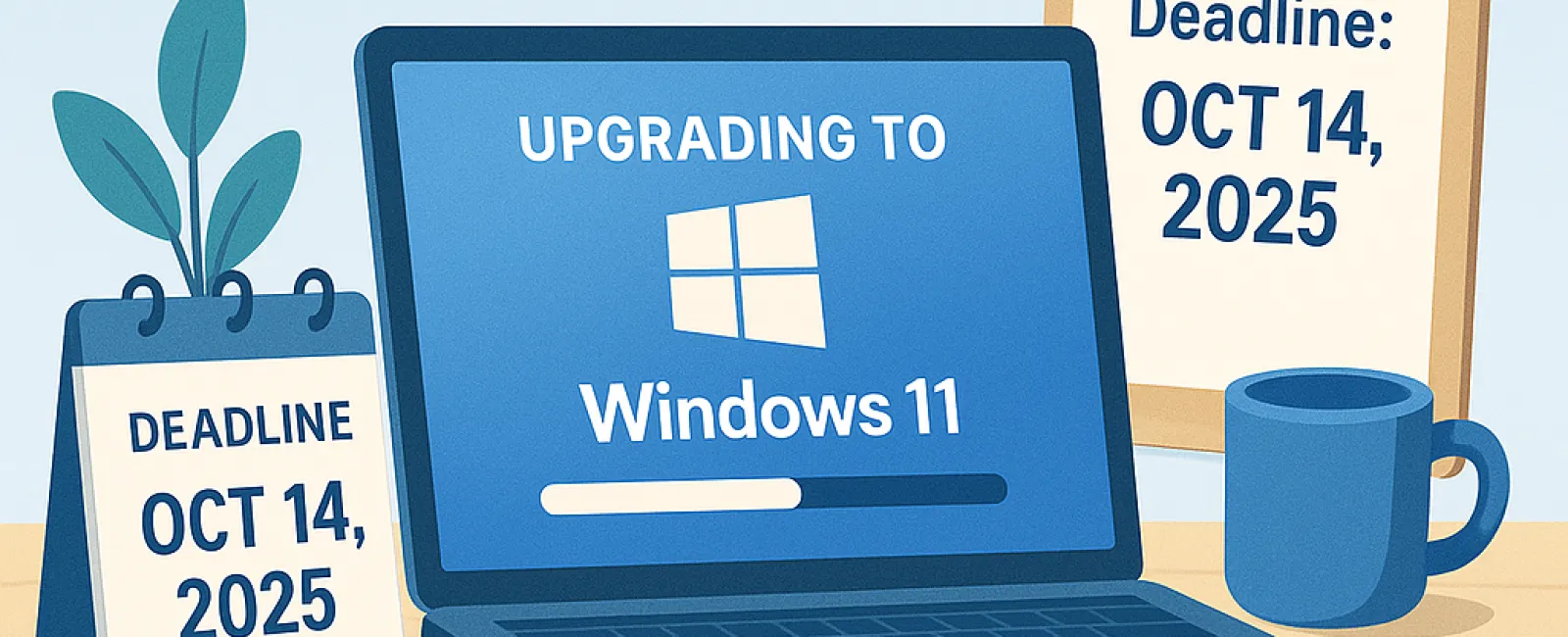June 23, 2025
If you are still using Windows 10 on your business machines, the deadline is approaching. On October 14, 2025, Microsoft will officially end support for Windows 10. This means no more security updates, bug fixes, or technical assistance.
Business owners need to realize that the cost of waiting is not just about eventually needing to upgrade, but also about what waiting could cost in the meantime.
"We'll Deal With It Later" Is An Expensive Strategy
Upgrading every machine in your business may not be an appealing budget item, so it can seem easy to postpone—until something goes wrong.
Here's what procrastination truly costs:
1. You're Operating Without A Safety Net
Once Microsoft stops updating Windows 10, every new security risk becomes your problem. Hackers target outdated systems because they are easier to exploit. It's like locking your front door but leaving the windows open. A single breach could cost thousands or even jeopardize your entire business.
2. Software And Hardware Compatibility Issues
Many business applications, including accounting software, CRMs, and industry-specific tools, are already phasing out support for Windows 10. If your systems fail during important tasks or client presentations, consider the potential losses. It's not just software; new printers, peripherals, and security devices may also become incompatible with your old operating system.
3. Lost Productivity
Older systems run slower, crash more often, and frustrate employees. Even small delays accumulate over time, reducing efficiency, damaging morale, and weakening your competitive edge. If each employee loses 10 to 15 minutes daily to technical issues, think about the cost over a month.
4. Emergency Upgrades Are Always More Expensive
Waiting until a system failure or lockout triggers an emergency upgrade leads to stress and costly rushed expenses such as urgent hardware purchases, expedited IT labor, and business interruptions during replacements. Planning ahead now saves money and hassle later.
5. You're Risking Compliance Violations
If your business manages sensitive data or must comply with regulations like HIPAA or PCI-DSS, using unsupported systems can lead to fines or legal trouble. Many regulations require current security standards, which Windows 10 will no longer meet after October 2025.
What Smart Business Owners Are Doing Now
They are proactively upgrading devices and using this transition to:
- Audit which devices need replacement
- Streamline software and tools
- Enhance cybersecurity defenses
- Plan IT budgets wisely for 2025
How To Make The Transition Smooth
Here are our recommendations:
- Run a compatibility check—Not all machines support Windows 11, so identify which need replacing
- Audit your applications—Ensure essential software works on Windows 11 or newer systems
- Budget for hardware now—Avoid supply chain delays later
- Partner with an IT provider—Let experts manage the transition with no downtime or surprises
Don't wait until October to panic.
Waiting until the last minute will cost you more - in
money, stress and missed opportunity. We're helping small businesses make the
upgrade the smart way: planned, smooth and optimized for future growth.
Click here or call us at (541) 726-7775 to book your 15-Minute Discovery Call
and we'll help you identify what
needs upgrading, what can stay and how to build a transition plan that won't
disrupt your business before the deadline.




